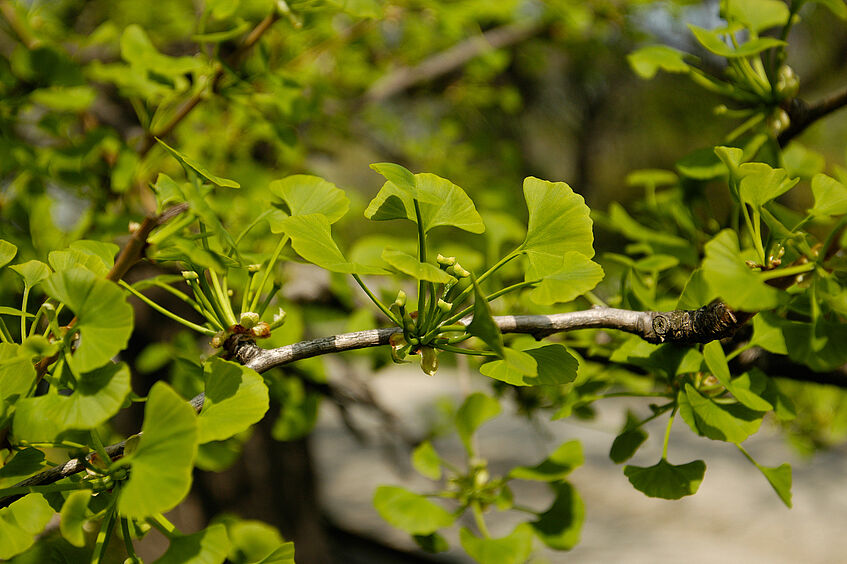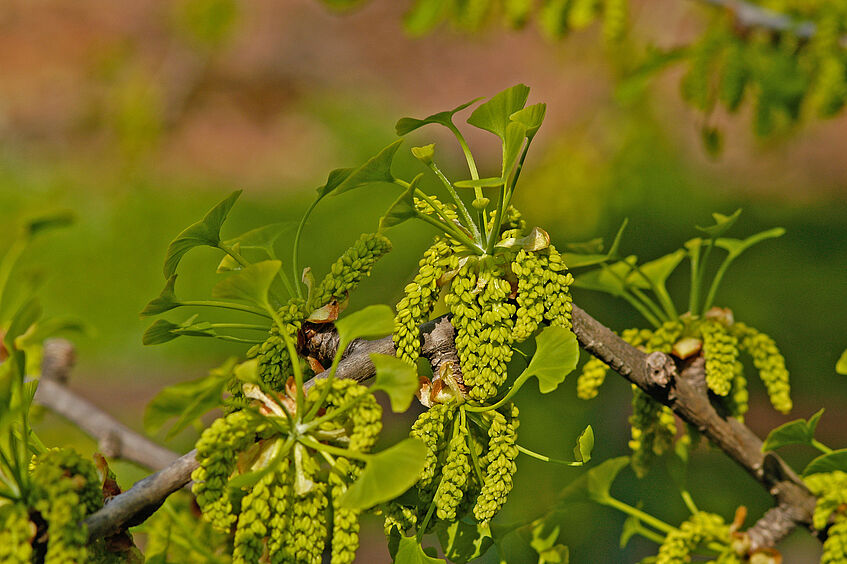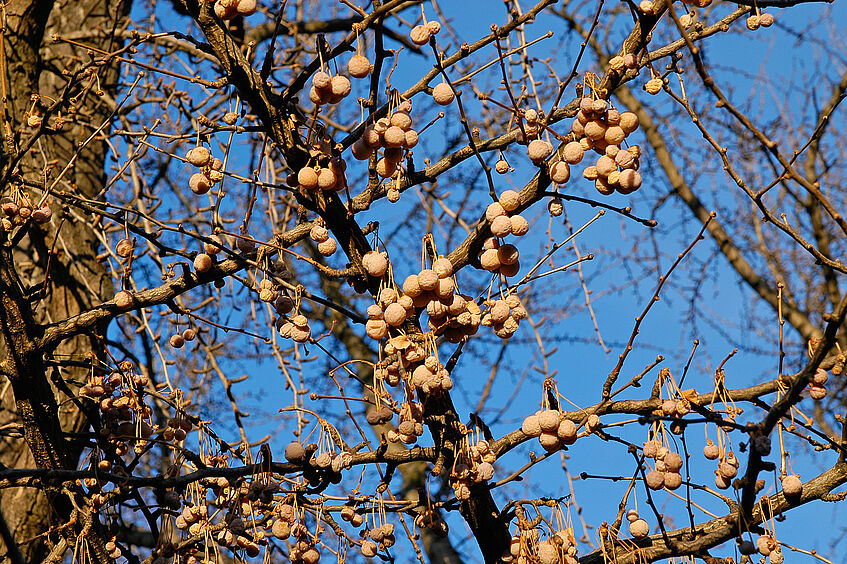Ginkgo biloba
Location in Garden: Near the entrance; areas 7, 15, 24
The Japanese call this tree "silver apricot" due to its interesting large, orange, fleshy-covered seeds.
A sole surviving relict species in a gymnospermous genus that c. 180 million years ago was widely distributed throughout the northern Hemisphere.
Today this single species is known only from China, Japan and Korea as a temple and street tree. In Europe and North America the species is widely planted in parks and avenues.
Native distribution: Now occurring only in a small region in southeastern China (Province Chekiang).
Appearance: Tree 5-20 (up to 35) m tall, rapidly growing 35-40 cm per year, with strongly wrinkled, long-fissured bark.
Leaves: With long stalks (= petioles), dichotomously nerved, somewhat lobed or divided, and turning golden-yellow in the autumn.
Reproductive structures: Plants are either male or female (= a dioecious species), which are impossible to distinguish when juvenile; the males produce pollen in April or May.
Seeds: The seeds produced from female plants are large (1-2 cm diameter) with a stony inner portion and an orange, fleshy covering that smells strongly of rancid butter. The seeds fall from the parental plant when mature and can require considerable clean-up, which is one reason why many persons (and cities) prefer to have only male plants. If the fleshy layer is removed, the seeds can be roasted, providing a tasty food.
Root: With a strong central taproot.
Location: Sun to partial shade; adapts well to a city environment.
Soil: No particular preference, growing successfully in cultivated areas, but flourishing best with deep acidic to basic soil, and a fresh, porous and nutritious substrate; bright green leaves often reflect nutrient deficiency.

Ginkgo biloba – weibliche Blüten © BGUW_R. Hromniak

Ginkgo biloba – männliche Blüten © BGUW_R. Hromniak

Ginkgo biloba © BGUW_R. Hromniak
